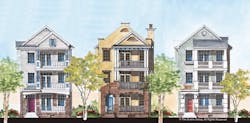15 Great Ideas From Leaders in Residential Design
Can design innovation jump-start home building? That's the question we posed to more than a dozen leading architects and designers in our special Design Innovation Report, published in the July 2012 issue of Pro Builder.
The group, which includes Robert Hidey, Aram Bassenian, Phil Kean, John Thatch, Arthur Danielian, Dave Kosco, Donald Evans, Larry Garnett, Sarah Susanka, Jerry Messman, Jeff Larsen, Bill Warwick, and Dale Patton, responded with their best ideas and concepts for helping builders sell more homes — today.
Here's a roundup of their design ideas.
